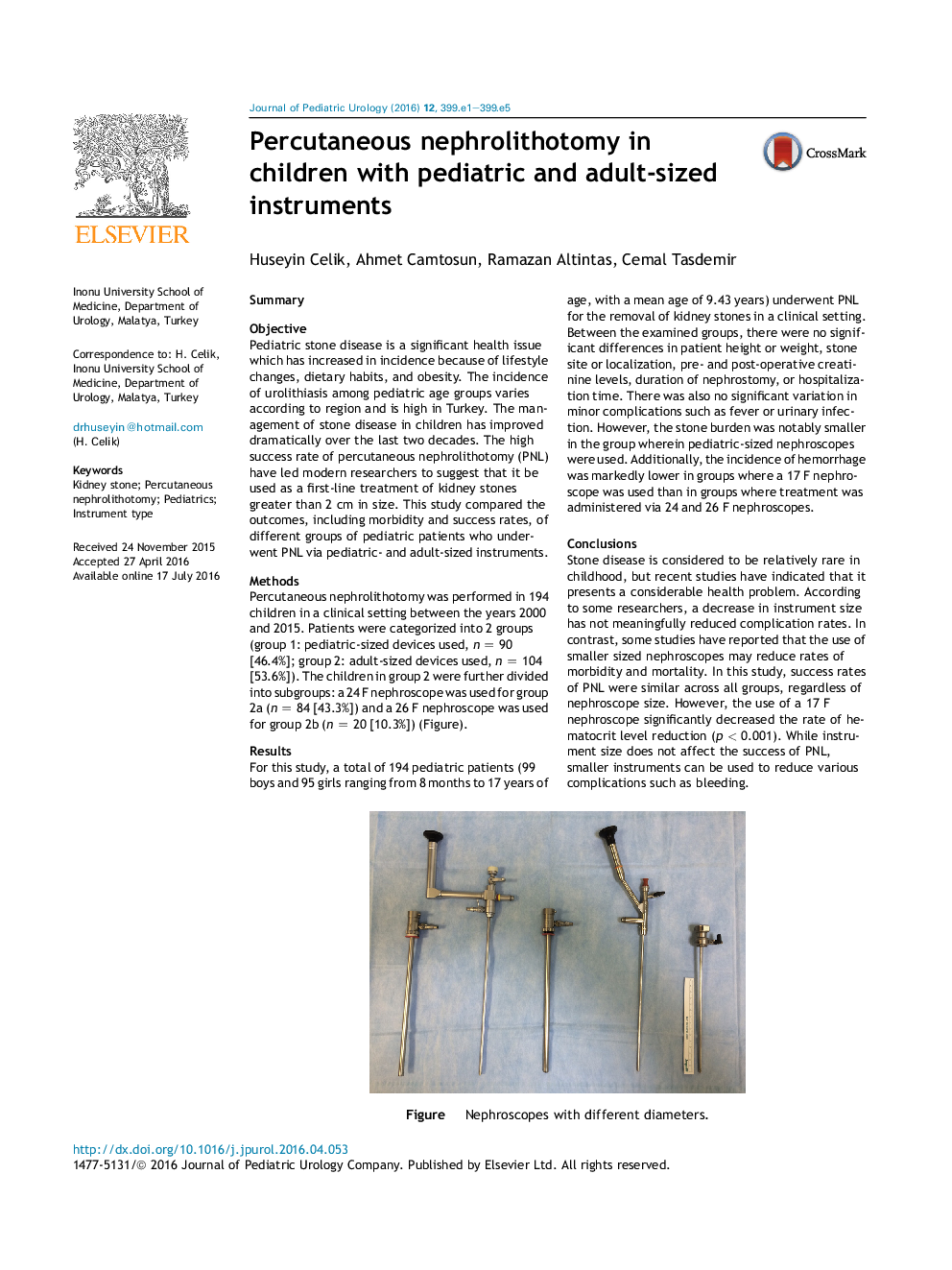| کد مقاله | کد نشریه | سال انتشار | مقاله انگلیسی | نسخه تمام متن |
|---|---|---|---|---|
| 5718723 | 1411256 | 2016 | 5 صفحه PDF | دانلود رایگان |
SummaryObjectivePediatric stone disease is a significant health issue which has increased in incidence because of lifestyle changes, dietary habits, and obesity. The incidence of urolithiasis among pediatric age groups varies according to region and is high in Turkey. The management of stone disease in children has improved dramatically over the last two decades. The high success rate of percutaneous nephrolithotomy (PNL) have led modern researchers to suggest that it be used as a first-line treatment of kidney stones greater than 2 cm in size. This study compared the outcomes, including morbidity and success rates, of different groups of pediatric patients who underwent PNL via pediatric- and adult-sized instruments.MethodsPercutaneous nephrolithotomy was performed in 194 children in a clinical setting between the years 2000 and 2015. Patients were categorized into 2 groups (group 1: pediatric-sized devices used, n = 90 [46.4%]; group 2: adult-sized devices used, n = 104 [53.6%]). The children in group 2 were further divided into subgroups: a 24 F nephroscope was used for group 2a (n = 84 [43.3%]) and a 26 F nephroscope was used for group 2b (n = 20 [10.3%]) (Figure).ResultsFor this study, a total of 194 pediatric patients (99 boys and 95 girls ranging from 8 months to 17 years of age, with a mean age of 9.43 years) underwent PNL for the removal of kidney stones in a clinical setting. Between the examined groups, there were no significant differences in patient height or weight, stone site or localization, pre- and post-operative creatinine levels, duration of nephrostomy, or hospitalization time. There was also no significant variation in minor complications such as fever or urinary infection. However, the stone burden was notably smaller in the group wherein pediatric-sized nephroscopes were used. Additionally, the incidence of hemorrhage was markedly lower in groups where a 17 F nephroscope was used than in groups where treatment was administered via 24 and 26 F nephroscopes.ConclusionsStone disease is considered to be relatively rare in childhood, but recent studies have indicated that it presents a considerable health problem. According to some researchers, a decrease in instrument size has not meaningfully reduced complication rates. In contrast, some studies have reported that the use of smaller sized nephroscopes may reduce rates of morbidity and mortality. In this study, success rates of PNL were similar across all groups, regardless of nephroscope size. However, the use of a 17 F nephroscope significantly decreased the rate of hematocrit level reduction (p < 0.001). While instrument size does not affect the success of PNL, smaller instruments can be used to reduce various complications such as bleeding.413Figure. Nephroscopes with different diameters.
Journal: Journal of Pediatric Urology - Volume 12, Issue 6, December 2016, Pages 399.e1-399.e5
